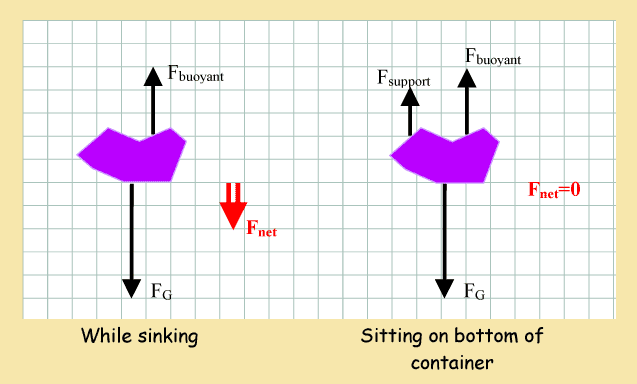Competency #4
Answer and Explanation
![]()

For the first case, the force of gravity is drawn longer than the buoyant force since the force of gravity is known to be 5 N and the buoyant force is equal to 3 N (the weight of the fluid displaced). In the first case, there would also be a frictional force (drag) between the rock and the oil (just as the rock would encounter air resistance if the fluid it were traveling in was air). Although air resistance is covered in PHS 100, drag forces in other fluids are typically not covered.
For the second case, the force of gravity is the same size as it was previously. We know this because the masses of the rock and the earth have not changed, nor has the distance between them changed significantly. Additionally, the buoyant force has not changed at all because the rock has not displaced any more oil- it is still occupying the space previously filled with 3 N of oil. Since the rock is not accelerating (changing its velocity), there must be an additional force present. The inclusion of a support force of 2 N completes the diagram. Since the total upward force (3 N + 2 N = 5 N) is the same as the total downward force (5 N), the net force is zero. By Newton's 2nd Law, we know that the acceleration must be zero:
